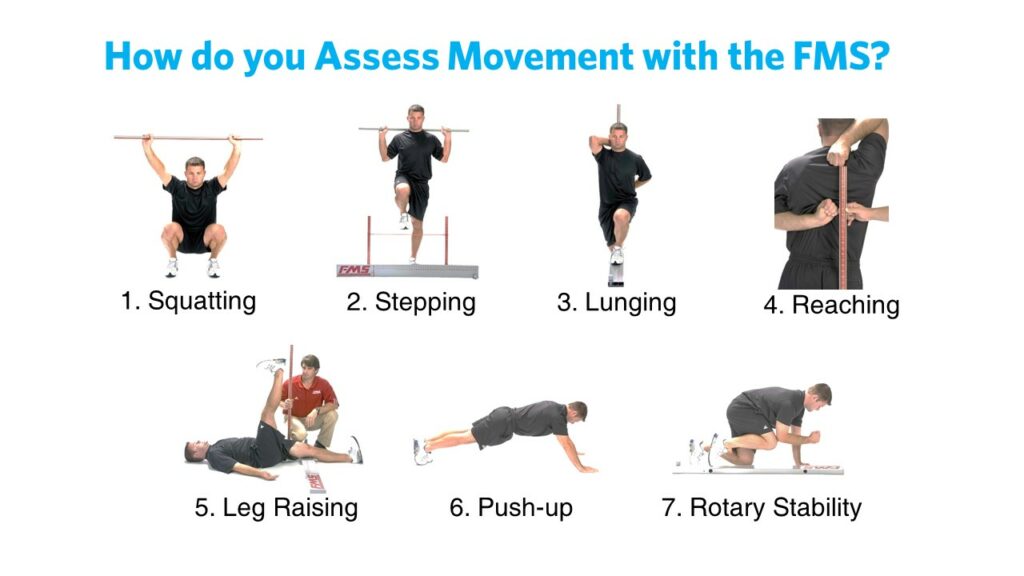BY SEAN DEL BEN, MKIN, CSCS, FMS LVL.2, FRC
INTRODUCTION
Have you ever watched the fluidity and grace with which Steph Curry and J.J Redick seem to dominate against their more athletic competition? Neither of these players ‘wow’ you with their gross motor abilities such as brute strength, or their raw explosive ability in the form of leaping ability and pure speed. The reason that they are able to get in the lane with ease and get such a dynamic shot off, or lose any defender while moving off the ball, against their stronger and more explosive peers, is because they have outstanding fundamental human movement patterns.
It is also no surprise that these two players never seem to nursing any chronic injuries. With this article, I’d like to discuss the importance of having a movement screen performed, and how it can help to keep you healthy, and perform to your body’s greatest potential. Is it possible that the most important aspect of training for basketball is simply being healthy enough to stay on the floor?

WHAT IS A MOVEMENT DYSFUNCTION?
As a young player, how are you going to impress the college or professional scouts if you are on the sideline? As a coach, it doesn’t matter if you have the best systems in the world, if you don’t have your best players available to execute them. Before you or your athletes begin performing a high volume of work in the weight room, and even on the court, it is important that you first undergo a movement screen by a qualified professional. A movement screen will look at your fundamental human movement patterns, and ensure that you do not have any major movement dysfunctions.
A movement dysfunction can be identified through painful patterns, inability to complete a movement pattern, or asymmetries between the left and right side of your body. Movement dysfunctions will lead your body to compensate in order to complete the desired sporting action (i.e cutting, jumping, sprinting). If present, and you begin training hard, these compensations will put you at a higher risk for overuse injury, and make you less efficient on the court. Less efficiency will mean that you become fatigued more quickly, and won’t jump as high or sprint as fast, for example.
WHAT CAN YOU DO ABOUT IT?
There are many different movement screens that can be performed, but due to its’ simplicity and the fact that you receive a score that you can reference later on, I highly recommend finding a strength & conditioning specialist, or clinician certified in the FMS (Functional Movement Screen). The FMS is composed of 7 movement patterns for which you will receive a score of 0, 1, 2, or 3 on each movement pattern. Extensive research on the FMS lets us know that a score of under 14/21 means that you are at a significantly higher risk of injury that those with a score of 14 or higher. It will also reveal the current presence of pain or asymmetries.
As an athlete, or even a coach, it is great to be able to have a score that you can use as a baseline for the entire basketball season to let you know if you need to work on your movement patterns, or if you simply need a maintain them to remain in a low-risk category. For example: If you receive a score of 18/21 in the pre-season, and you receive a score of 15/21 with an asymmetry at the season’s half-way point, you know that you have compromised your mobility, flexibility, and/or have not been using good enough technique in the weight room.
You will then need to dedicate more time to working on your movement patterns to avoid overuse injury, or reduced performance. Another key point to make is that if you score under a 14/21, not only will you want to aggressively work on your movement patterns, but you will want to monitor the volume of work you are doing on the court and in the weight room. Performing high volumes of work with dysfunctional movement patterns means that you are ‘putting fitness on dysfunction’, which will eventually lead to injury.
For further information on the FMS, please visit www.functionalmovement.com
TAKE ACTION
To ensure you stay on the court to help your team win, get recruited by a college scout, or earn your next professional contract, please take your performance of your basic movement patterns seriously. Find a good strength & conditioning professional, physiotherapist, or other practitioner, and please have the FMS performed. This will help you maximize your full potential!

Key Points
Poor movement patterns will put you at higher risk for overuse injury, and will decrease your performance
Proper movement patterns require your body to have a sound balance of mobility and stability
Previous injury and asymmetries are the greatest predictors of injury
A score of less than 14/21 on the FMS puts you at a significantly higher risk for injury
Poor movement patterns means that your body must compensate to get the task done
If your score decreases as the season progresses, it means that you have not kept up with your flexibility, mobility, and stability training
Maintaining good movement patterns requires consistent practice of flexibility, mobility, and stability, along with dedication to using great technique in the weight room, and on the court.
Please contact us at [email protected], if you are in the Greater Vancouver Area and would like to have a Functional Movement Screen performed, or if you have any questions about the process.
